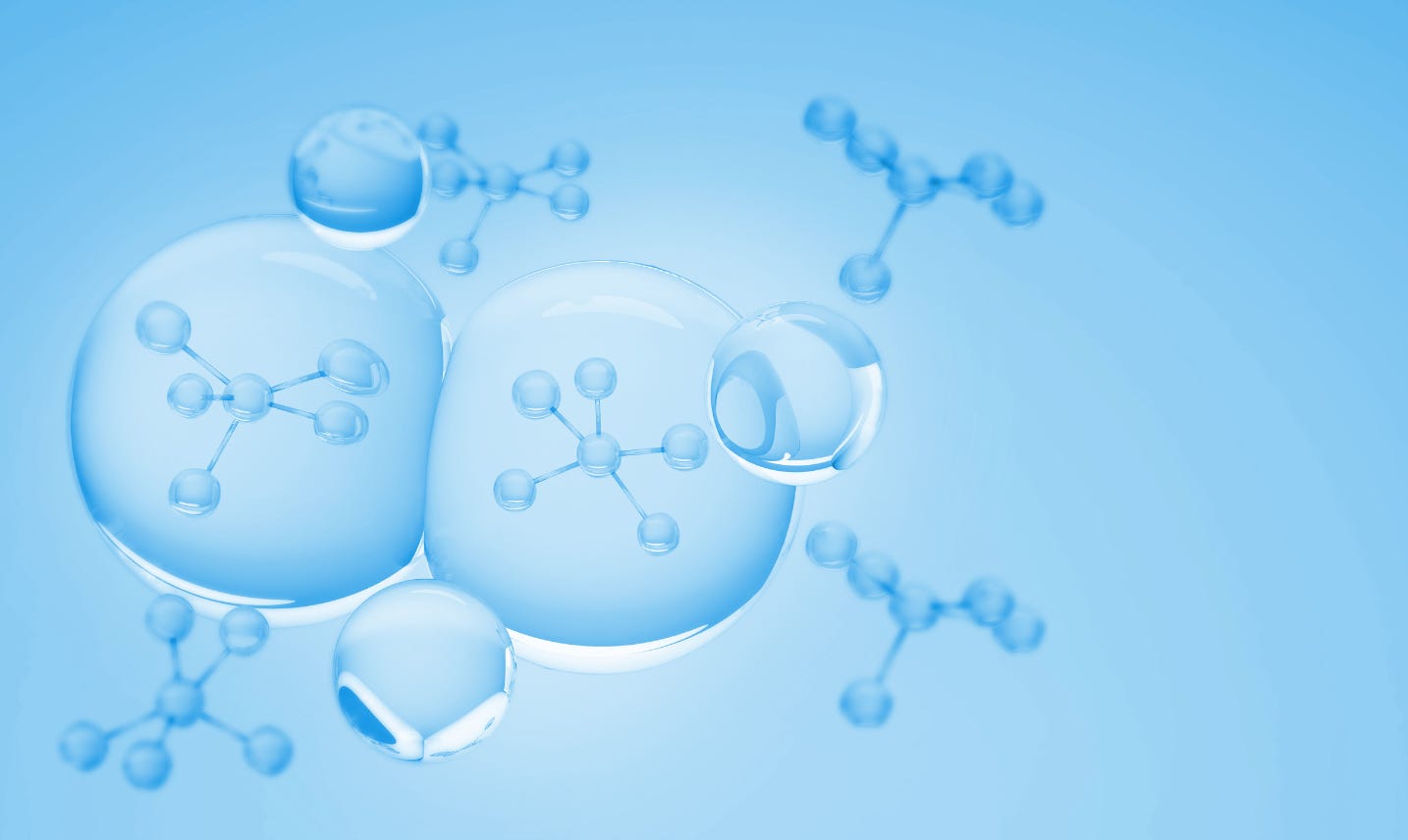The Sequence 10/9-10/15
Liquid Biopsy: A Non-Invasive Way to Diagnose and Monitor Cancer
Liquid Biopsy: A Non-Invasive Way to Diagnose and Monitor Cancer
Cancer is a leading cause of death worldwide, accounting for nearly 10 million deaths in 2020. Despite this, many cancers do not have screening programs to identify people at high risk for them, and many people that do know they are at high risk fail to follow advised medical screening protocols because they are either inconvenient or inaccessible.
Liquid biopsy technologies are changing the game. Liquid biopsy, which allows for early detection of cancer by way of a blood sample, has the potential to make screening for the presence of cancer biomarkers more accessible.
Wow! What exactly is liquid biopsy?
A liquid biopsy is a test that can identify and measure biomarkers in bodily fluids. Most commonly, samples are blood, however samples can also also include urine, cerebrospinal fluid, and saliva. A liquid biopsy used for the early detection of cancer can ‘see’ biomarkers that are signs of cancer in a blood sample in the same way a regular tissue biopsy can ‘see’ cancer in tissue.
The biomarkers that these tests can look for are varied. The tests can look for:
Circulating tumor cells (CTCs): tumor cells released into the blood by a tumor
Cell-free DNA (cfDNA): DNA that is released from cells into the circulatory system throughout the body. You may be familiar with cfDNA testing as it relates to noninvasive prenatal screening (NIPS). In the case of cancer, it is DNA that is released from tumor cells that is circulating throughout the body. This is called circulating tumor DNA (ctDNA). ctDNA can be distinguished from normal cfDNA fragments by the presence of:
Pathogenic variants, or harmful changes in the DNA, that are consistent with cancer.
Ex: a pathogenic variant in the BRCA1 gene is a biomarker for breast, ovarian and other cancers.
Methylation markers, or the presence or absence of a methyl group, which indicate changes in gene expression and can be a biomarker for cancer.
Extracellular vesicles (EVs): small particles found in bodily fluids that carry a variety of molecules such as lipids, carbohydrates, proteins, metabolites, RNA, and DNA fragments that aid communication between cells of the body.
Proteins: carry out many of the cellular functions within cells
Ex: prostate-specific antigen is a protein biomarker used for the identification of prostate cancer
Cell free RNA (cfRNA): like cfDNA above, but instead of DNA that is released from cells into the circulatory system, it is the RNA that is released from cells into the circulatory system.
Testing could pick up a couple of different kinds of RNA: messenger RNA (mRNA) which codes for → protein, and also microRNA, which does not code for protein but helps regulate gene expression.
Platelets: the kind that aid in the formation of blood clots
Autoantibodies: antibiodies that react with substances formed by a person’s body
How accurate is it?
The ability of a liquid biopsy test to detect cancer increases with the stage of disease. One study showed that the fraction of patients with cancer who had detectable ctDNA using cfDNA liquid biopsy was 47%, 55%, 69% and 82% for patients with stage I, II, III and IV cancers respectively. This means that at stage IV cancer, 18% of tests would still not even have a chance at being positive.
This is not to say that the tests are inaccurate, but that the release of ctDNA into the blood stream is highly variable and can be hard to pick up. It is an ingenious method of screening, but also has limitations.
What kinds of cancer can it detect?
Commercially available tests include early detection of prostate cancer, lung cancer, colorectal cancer, brain cancer and ovarian cancer. There are also commercially available tests out there that are for ‘multi-cancer’ detection and will detect that there is a cancer, period. Any kind. This is because some of the methods above can detect that something looks off, but not a specific cancer type (think: methylation markers, EVs, or autoantibodies). Those tests will then try and predict where the origin of the cancer is.
Additionally, there are many more being researched. Examples include tests on eary detection of breast cancer, pancreatic cancer, liver cancer, and breast and ovarian cancer risk using microRNAs.
What does this mean for me?
Liquid biopsy for cancer detection can be used for cancer screening, early diagnosis, therapeutic evaluation, and monitoring disease progression. While I think the use of liquid biopsy for early cancer detection is intuitive, its use in therapeutic evaluation may not be.
Let’s use an example to describe the use of liquid biopsy in therapeutic evaluaion. Say an individual receives surgery to remove a tumor, and their healthcare provider is deciding whether additional treatment like chemotherapy is needed to remove any lingering parts of the cancer. Liquid biopsy may be used to decide whether there is actually any additional cancer to treat, and a negative test could mean avoiding unnecessary chemotherapy in that patient. Additionally, liquid biopsy could be used to inform which cancer treatment a patient may be eligible for, and to understand how well someone is responding to a treatment based on whether the biomarkers are showing a growth or reduction in cancer size.
What’s the takeaway?
Liquid biopsy is a minimally invasive and promising alternative to tumor biopsy that can potentially detect cancer earlier and save a lot of patients from over-treatment. As the technology emerges, it is important to understand the chances a test can pick up any given cancer, the limitations in detection, and what any given test is actually looking for. It’s exciting stuff, and could be of great significance for the prevention and treatment of cancer in the future.
Newsletter Sources:
https://www.canva.com/photos/MAFDFCkp_xA/
https://gco.iarc.fr/today/home
https://www.who.int/news-room/fact-sheets/detail/cancer#:~:text=The%20problem,lung%20(2.21%20million%20cases)%3B
https://www.bcrf.org/blog/what-liquid-biopsy/?utm_source=google&utm_medium=cpc&gclid=Cj0KCQjw7JOpBhCfARIsAL3bobcIzhxWbTBte_Ebw881-_a00o5CHmj2P54BZTYpSHODmYTr9QLTC7EaAl8uEALw_wcB
https://theweeklysequence.substack.com/p/the-sequence-1212-1218
https://www.researchsquare.com/article/rs-1203227/v1
https://www.ncbi.nlm.nih.gov/pmc/articles/PMC9922467/
https://www.genomeweb.com/molecular-diagnostics/myriad-genetics-memorial-sloan-kettering-partner-study-mrd-testing-breast?utm_source=Sailthru&utm_medium=email&utm_campaign=GWDN%20Mon%20AM%202023-09-18&utm_term=GW%20Daily%20News%20Bulletin
https://www.cell.com/cell-reports-medicine/fulltext/S2666-3791(23)00361-0?utm_source=Sailthru&utm_medium=email&utm_campaign=Scan%20Tues%202023-09-19&utm_term=The%20Scan%20Bulletin
https://theweeklysequence.substack.com/p/the-sequence-1226-11
https://www.dana-farber.org/newsroom/news-releases/2023/new-study-suggests-simple-test-could-detect-breast-and-ovarian-cancer-risk-without-genetic-sequencing/
https://www.ncbi.nlm.nih.gov/pmc/articles/PMC4017867/
https://www.genomeweb.com/molecular-diagnostics/guardant-health-receives-guardant360-cdx-regulatory-approval-japan-her2-lung?utm_source=Sailthru&utm_medium=email&utm_campaign=GWDN%20Tues%20AM%202023-09-05&utm_term=GW%20Daily%20News%20Bulletin
https://www.nature.com/articles/s41591-023-02598-9?utm_source=Sailthru&utm_medium=email&utm_campaign=Scan%20Tues%202023-10-10&utm_term=The%20Scan%20Bulletin
https://www.frontiersin.org/articles/10.3389/fcell.2021.639233/full


